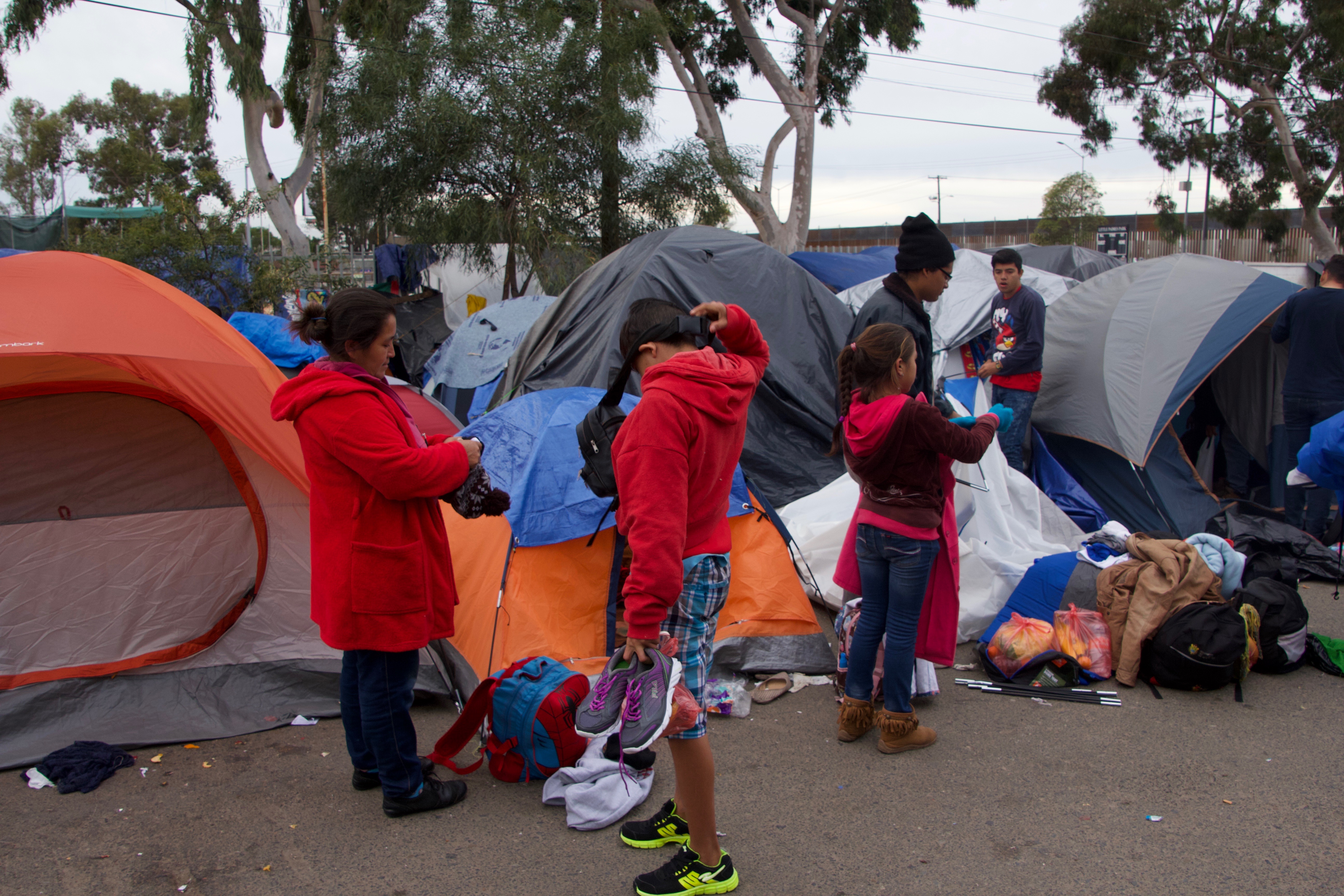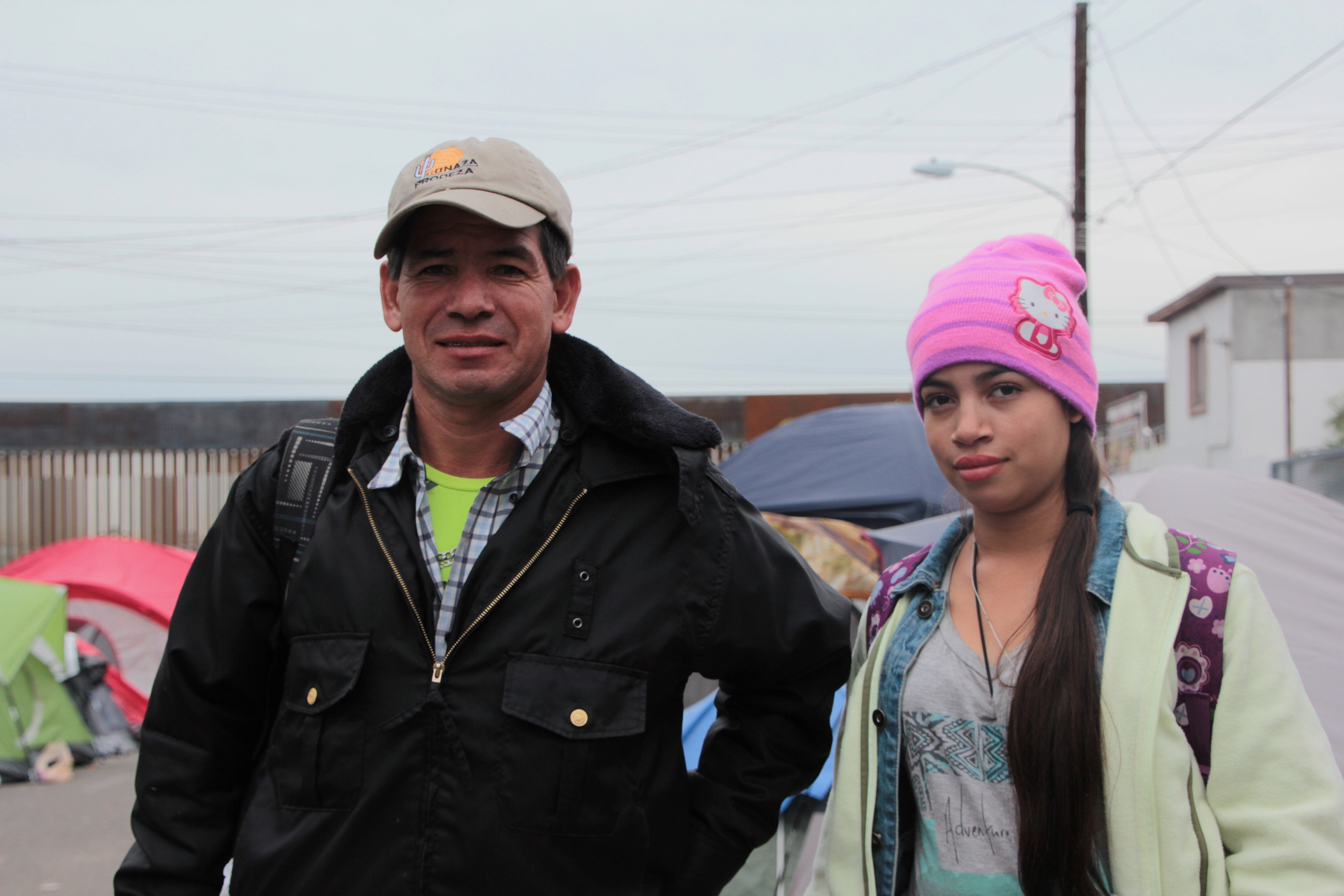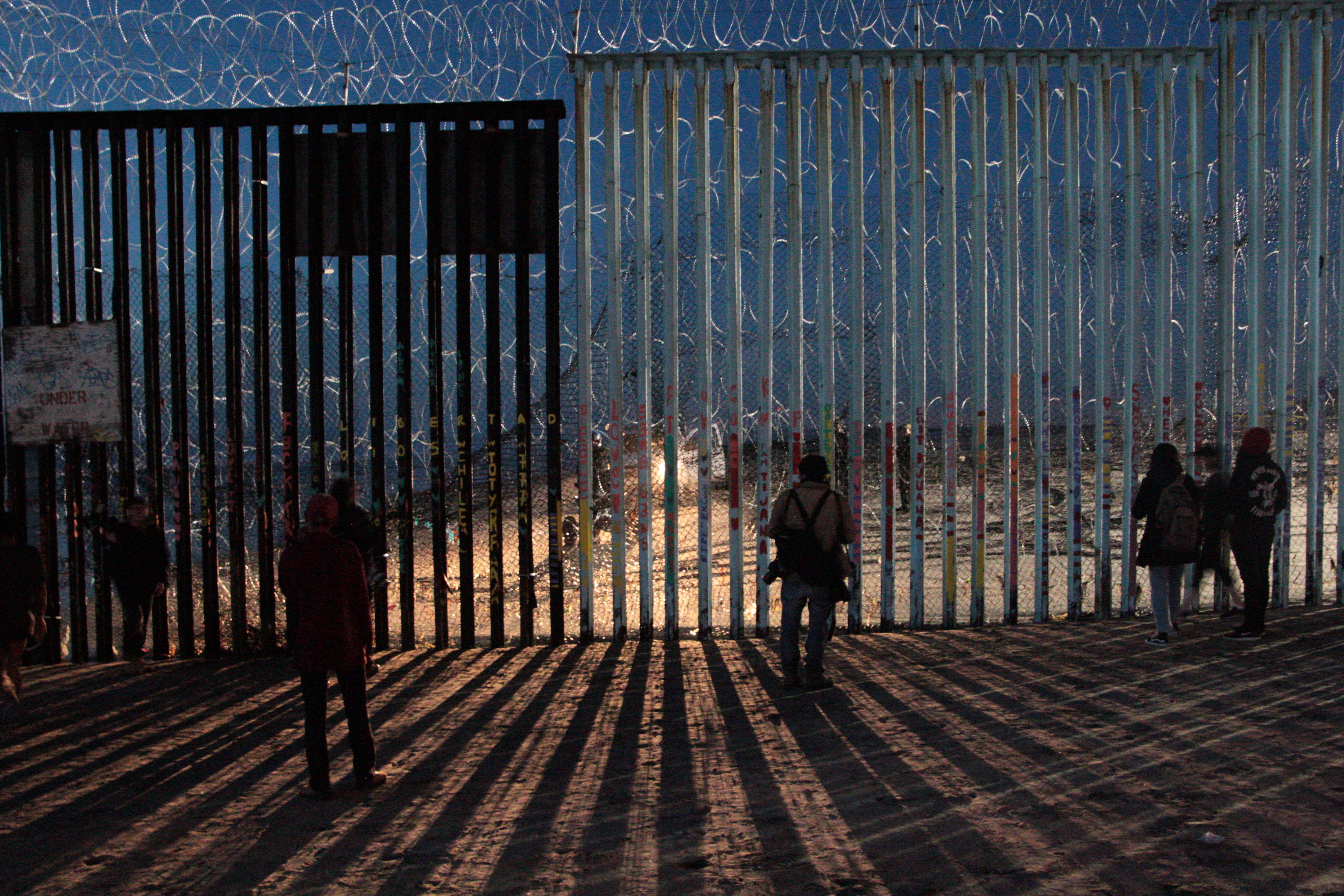As the sun set on Thursday evening in Tijuana, Mexico, a family of three crossed illegally into the United States. They’d found a hole the size of a dog door at the edge of where the tide came up on the border wall, which juts out 100 yards from the beach into the Pacific Ocean. Waves broke against them as they crawled through on their bellies.
Once on the other side, the family walked east along the wall, careful to avoid the fields of razor wire that line the sand on the American side. They didn’t have to walk far to reach the swarm of armed Border Patrol agents who stood waiting. The family held hands, walking in a line, with the child, a 10-year-old, being pulled by his parents. After walking about 50 yards, the father finally dropped the mother’s hand to raise his own arms in surrender to the agents. They were swiftly whisked into a Border Patrol truck and driven away to a nearby detention facility. The entire procedure took minutes; the sun hadn’t even finished setting. This was all part of the plan: To get detained, and to then ask for asylum (a right afforded to even those caught crossing the border illegally); to reach safety, by any means necessary.
It can be hard to understand why a family would squeeze through bars and barbed wire to put themselves in detention. But, as Marisol, a mother from Honduras, explained, Tijuana has become a city where thousands must decide between a collection of unfreedoms. Detention in the U.S. is just another of these choices.
The morning after the other family crossed, Marisol motioned toward the two-person tent she shared with her own three children. This was the first unfreedom she had to choose from, she explained: Remain in this cramped tarp, or risk detention in the U.S. For 45 days, the four had lived here, in a shanty camp with 300 other migrants straddling the U.S. border. The camp no longer had bathrooms, and some days her children went without food. “This tent,” Marisol told me matter-of-factly, “is better than Honduras. And detention is better than this tent.”
She pointed to the wall, visible at the edge of the camp. Today, they would cross the border illegally, and surrender themselves to Border Patrol, just as the other family had done yesterday.

(Photo: Jack Herrera)
“I have a lot of fear for my children. I know they will put us in detention together,” Marisol said, as she organized her belongings, choosing what to take and leave behind. They’d been waiting for over 45 days now for their shot at legal migration, with no clear end in sight. And even if she were to receive that chance at legal asylum, the first step would still be detention. Her children made their preference clear: With the same seemingly inevitable endpoint either way, why wait any longer?
Detention by Border Patrol is a guaranteed mechanism in the asylum process—a fact that might surprise many Americans. When asylum-seekers first enter a port of the entry, they are held in cells designed for short-term holding before being processed for a credible-fear interview (the first step of asylum). The holding facilities in Border Patrol offices are often abysmal, and many are not designed for overnight use; it is not unusual for people to sleep on the floor. Federal law limits the amount of time asylum-seekers can spend in this holding to 72 hours, but, according to the Department of Homeland Security’s own internal report released earlier this year, asylum-seekers, including children, were often held for far longer.
“Detention is better than being here, in the dirt,” Marisol said, motioning toward the tent. At least in American detention, her children would be fed regularly and have access to real bathrooms, she said.
Tijuana now hosts over 5,000 migrants from Central America, who arrived in two caravans in November. Without space in shelters, many of these migrants live in tents, either in the rudimentary camp the Mexican government and the United Nations have created, or in a collection of shanty villages spread out across the city.

(Photo: Jack Herrera)
In Tijuana, the locals call the land on the other side of the city’s two border walls el otro lado. Thousands of migrants in the city—from Honduras, Romania, China, India, Cameroon, Haiti, Eritrea, Brazil, Russia—use the same term, but in different dialects: dozens of languages’ way of saying “the other side.”
As Marisol and her children now prepared to leave for that other side, a steady stream of kids, some not wearing shoes, came to say goodbye to their departing friends. Like many in the tent city, Marisol did not have access to a working cell phone, and therefore was unable to see the breaking news around the tragedy of seven-year-old Jakelin Ameí Rosmery Caal Maquin, the indigenous girl from Guatemala who died while in Customs and Border Patrol custody.
But even if Marisol hadn’t heard the news, she knew the dangers. She instructed her children to bundle up for the trek; other migrants had told her that the hieleras—the “ice boxes,” as the CBP holding centers are called—would be cold. Her two daughters, 16 and 12 years old, slipped on jeans over multiple pairs of leggings. Her son, a 14-year-old, zipped up a Spiderman jacket over his polo shirt.
Days prior, Marisol and the parents of two other families decided on a plan to cross the border illegally together. “They will only hold us for three days,” Roberto, a father from Honduras, said. He and his 16-year-old daughter intended to cross with Marisol and her children. Roberto, confident and buoyant, seemed to be the leader.

(Photo: Jack Herrera)
They would leave Friday night, confident that a holding cell in the U.S. would be better than anything on this side of the border. But that rationale would soon be shaken when news of Caal Maquin’s death finally spread throughout Tijuana’s migrant community.

As Marisol’s 14-year-old son packed up his things, I asked him if he was nervous about the crossing.
“No,” he said, smiling. “We’ve traveled a long way now; it’ll be fine.”
What about spending time in jail? At this, his smile faded for a second: “Pues, it’s not worse than staying in the tent. And they’ll let us out soon.”
I posed the same question to Roberto’s 16-year-old daughter as I traveled with the families to that same dog door-sized hole where they, like the family before them, intended to sneak across.
The teenager, tall, with braces on her teeth, laughed. “You seem more nervous than I am,” she said.
Twenty minutes later, as we scrambled down the side of the border wall toward the ocean, I asked her, was she still not nervous? Flood lights on the American side illuminated the long tall posts of the wall, throwing rectangles of light along the path we walked on. Through the openings in the wall, we could see Border Patrol trucks. Behind a field of barbed wire, some agents stood watching us.
“I still think you’re more nervous than me,” she said. But she didn’t laugh this time.


(Photo: Jack Herrera)
When Marisol and the other families arrived at the hole, they found that Border Patrol had, sometime in the last day, covered the gap with a sheet of metal, bound firmly in place. A group of three other migrant families were already there, looking at what was once a plausible entrance. On the other side of the border, about 30 feet from the wall, a Border Patrol agent stood watching, a rifle held idle in his arms.

(Photo: Jack Herrera)
Roberto spent an hour leading the group of families up and down along the wall, across the beach, looking for another hole. On the other side, Border Patrol agents followed along, shining flashlights at them through the barrier. Finally, as the sun began to set, the families gave up. Roberto started talking about sleeping on the beach; Marisol said she would look for another shelter where she and her kids could stay.
“Will you try again tomorrow?” I asked Roberto.
“Yes, yes, we’re going to cross,” he said. “We’ll find a way.”





